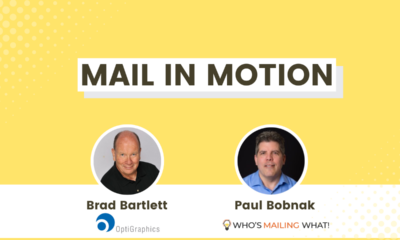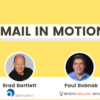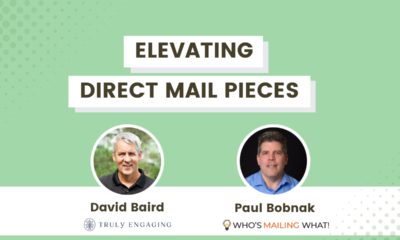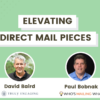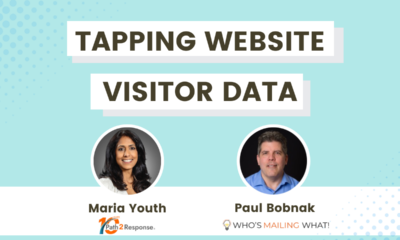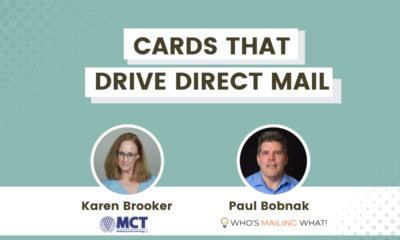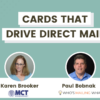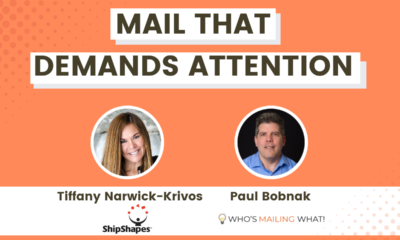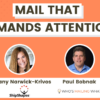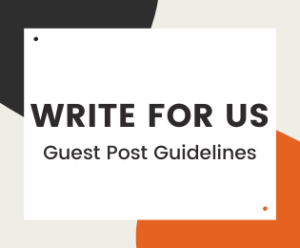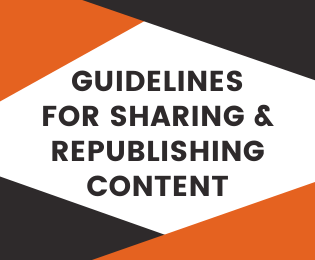MEET THE MAILERS
Meet the Mailers: Data Modeling to Convert Leads
In this episode, we talked with DK Solutions about how modeling helps response and tips for home services mail.
In this episode, I talked with Liran Kapoano, Partner and COO of DK Solutions.
Headquartered in East Brunswick, NJ, DK Solutions creates targeted lists based on proprietary technology, extrapolating customer data to the whole population to generate highly qualified leads.
We discussed how (and why) the company uses data collection to develop lists and leads for customers.
As Liran explained:
If you want to be successful, especially in a time of rising postage, you need to be able to differentiate who you’re targeting versus just casting as wide of a net as possible.
 Liran KapoanoFounder
Liran KapoanoFounder
DK Solutions
Among the many topics we covered at length:
- Liran’s background in marketing and day-to-day work
- The services DK solutions offers to marketers
- How modeling helps response
- Using data better in direct mail
- Tips for home services mail
- Why direct mail works
Here are some questions and answers (edited for clarity and space):
-
Well, let’s get into it and talk about your modeling services and how using them improves response and generating leads and all of that.
So a lot of times when we start talking about this with a prospective client or even someone who’s signed on with us and we’re talking them through the process, it can be a little hard to wrap your head around it.
You know, you just pay a little extra for data and it’s just magically better. Like, no, it’s not. There’s not like some secret sauce or hypnosis or anything like that, right? There’s no magic over here. It’s just very simply, we take a list of your customers and we see what do they have in common, what are their demographics, their age …how much money do they make?
I mean, you know, your typical stuff, like a lot of people think of in terms of what matters in terms of a customer, but also what are their buying patterns? Are they a Macy’s person? Are they a Nordstrom person? Not exactly the same thing, right? Do they drive a minivan? Do they drive an SUV? Do they drive a sedan? What kind of credit card? Do they collect coins? I mean, do they have a pet?
Things that have absolutely nothing to do with the actual product but that are shared behaviors and interests that a group of people share. And then we will go into a zip code and we will say, OK, here’s a 100, a 1000, 10,000 people that live in this area.Which of them look the most like these people that we already modeled for and that’s in essence what it is.
[T]he way I try to explain it is, imagine you had a group of a 100 people, right? Walking down the street, and of those hundred people, three or four of them would be your customers, right? Well, you could try to market to all, you could try to convince all 100 of them to buy what you’re selling, but there’s probably 10 or 20 of those people that are much more likely to be interested than the other 80 or 90. And those three or four sales are almost definitely within those 10 or 20 people.So rather than trying to dig through everyone and getting to those interested people, we will only focus on those 10 to 20 people where the vast likelihood, 90, 95% of your customers are gonna reside. We’ll send out, instead of sending out 10,000 mailers to a given area, we’ll only send out 2000 or even 1000 depending on what the geographical area is.
You end up getting pretty much the same amount of responses as you would by mailing, maybe not all 10,000, but maybe five or 6,000 …10 or 20 leads coming from one or 2000 people, or maybe 12 to 23 leads by mailing 10,000 people. It’s’s almost never cost-effective to try to chase down those one or two people that we might miss.
And that’s effectively how it works. It’s not so much that our data, our lists are magically more responsive. It’s just that we’re cutting out the people that would never really respond. We like to think of ourselves as a waste reduction company more than an interest generation company.
So it’s basically like having a model customer or several different model customers … it’s not like this is some amazing new advance in technology that didn’t exist, although it certainly didn’t exist 15 years ago. Or it did, but not in the same way. But with everything, with social media, people are volunteering a lot more information about themselves than they ever did. They’re responding to these surveys, you know, these surveys like, “What Harry Potter house are you like?” You’re really filling that out. You’re just telling other people what to market to you basically. So, being able to leverage that, which is obviously a technological advance and applying to something that a lot of companies don’t think is very technologically-driven.
A lot of people think of mail as just this snail mail or pony express or … old- fashioned stuff. But if you want to be successful, especially in a time of rising postage you need to be able to differentiate who you’re targeting versus just casting as wide of a net as possible.
And really for us, what I think makes us different is, first of all, there’s a lot of data companies, a lot of mail companies, a lot of print companies. There’s not that many companies that do two of those three things well, or certainly not all three of those things in one place. So you could literally come to us and just tell us where you want to mail and we’ll do everything basically from start to finish.
The other part of it is that we also have a very different approach to this kind of thing where a lot of companies and we find this with our clients … they talk about things like age and income and stuff like that, and it’s like everyone’s targeting for age and income, right? I don’t even like targeting for income. Like, we do it as part of something else, but never on its own … where, you know, these are all people that have responded to a direct program at some point in the last X amount of time. Nobody has that but us obviously, because that’s the one thing we would never share with anyone. Proprietary. And we find that these people respond, you know, if you respond to one mail campaign, then you’re open to mail as a marketing tactic.
Our modeling process where if we have a list that already exists that we think can work for your product, we’ll start with that. And if we don’t, we’ll build a custom list for you from your own customer files. And actually we’ll do that in the long term anyway. Even if we start with our own file, we’re still gonna tailor it and really make it for people that are in your space.
What we’re able to do is work with the big data houses that do the traditional data collection and marry it along with some of these newer ways of data collection … and we didn’t even talk about things like just what’s public record.
-
So speaking generally, what can marketers do to use data better?
Well, they should come to us first of all, but for just some free advice I guess. It depends on what kind of business you are.
If you’re a pizza guy, you’re probably not too worried about data. You should do saturation mail. You should get the maximum postage discount, cuz it doesn’t, you know, take a genius to figure out who likes pizza. It’s basically everybody. It’s not like some big mystery.
So, for those kinds of companies that are your local restaurant … your local supermarket for sure. Things that are like necessities. You really shouldn’t talk to us. I mean we’ll talk to anyone. It’s not really gonna give you that much of a competitive edge.
But if you’re, let’s say you’re a Dish Network retailer, for example, or a cell phone reseller, or anything that requires things like a credit score, and you have a company, a larger company, let’s say, that’s paying you a bounty.
Well, some companies will pay more money for a better one. So they’ll pay you maybe $300 for a new activation if it’s your standard to your customer. But if they take a higher package and maybe they take a higher cell phone plan or whatever, they might pay you more.
So what if you were able to model for just those kinds of people? So forget about your customers, if you have a big enough and not even if it’s something like that, even if it’s your own company, you may know yourself that, well I offer three different kinds of service, and one of them is an extra $10 a month, and one of them is an extra $20 a month.
Well, why don’t you, if you have enough customers, why not model for the kinds of people that take the most expensive package and are worth the most amount of revenue to you and only target for those people? That’s something that a lot of companies don’t do, even if they do modeling, because they just look at their entire customer base.
And they don’t really think of, well, which of these customers are worth more to me? What if I could only talk to people who were similar to those kinds of people? The same kind of behavioral balance, right? That’s something that a lot of companies that even do understand data don’t do.
-
So, what kind of markets does the company specialize in? What verticals are you in?
Well, we kind of have a niche. We got into a niche of insurance, mostly life insurance type products.
But that’s really because that’s where we started, that’s where our initial clients were in that world. And word of mouth is word of mouth. By the way, that’s also where traditionally direct mail, even when a lot of companies kind of moved away to, things like digital, direct mail was always the gold standard, even through the late 2000s and all through the 2010s.
We’ve also all done some work in home services. We’ve done some work in satellite TV and cable and things like that. I think that for us, we also, one niche we aren’t in as much as we want to be is not-for-profits.
Not-for-profits are great at targeting and retargeting their existing donor base. They’re not as great in terms of finding people that are pre-programmed to be like their existing donor base. So I think that our services could come in very handy. And I also think that a lot of not-for-profits pay a lot of money for mail that is not really, it’s not necessary, especially with postage increases.
They’re paying a ton of money for this stuff. And I’m not so convinced that it’s that that’s necessary for response rates. I mean, it looks nice, obviously. I think there’s a lot that we could do for some of these companies where we can kind of get the same kind of appeal to a more targeted audience that is outside of the people they quote unquote already know.
And also probably costs them less per unit, even though the data would cost them a little bit.
There’s a whole generation of not-for-profits that sprung up in the last 20 years that barely do direct mail because they’re run by frankly, younger people who don’t really … I mean, look, I would’ve been one of those kinds of marketers if I hadn’t gotten an understanding of direct mail when I was in my early twenties. I mean at the time that I was doing that, a lot of people my age were not. It was all about online marketing and it makes sense.
It made sense. But what I think is an interesting side effect of that, and I don’t think a lot of people are really talking about this in the industry yet, is that there’s like a gap of time where a lot of companies who did direct mail in like the early 2000s, you know, stopped.
And a lot of new companies never have never done it. And there’s like, you don’t find a lot of people that are like around like my age range that this is like their thing. And there’s almost like a knowledge gap where, unless you were already in direct mail in the late 90s versus now there aren’t that many new names in the business. And I actually think that that may be why we were able to be [or] part of the reason why we were able to be pretty successful right off the bat was because … we didn’t have a lot of the entrenched, you know, “this is the way it’s always been done, so this is the way that we’re gonna do it.”
We were like, let’s pretend we don’t know anything about this. Like we know printing and mailing and all that stuff, and we know that data should play a role, but beyond that let’s not take anything for granted. And I think that that approach can be pretty revolutionary for a lot of companies that either have been kind of stagnating in direct mail, have never done it before, or did it for a while, and then gave up on it because they moved on to what the replacement for it was supposed to be.
-
What are some good tips for people using direct mail for home services?
So, obviously, if you’re a local, so there’s different approaches.
You know, I get something from Andersen Windows all the time. I don’t know if you get these, also, “We’re in your neighborhood … we’re replacing your neighbor’s windows …”
I guess it works because they keep doing it. But if you want to compete with that, and you don’t have necessarily the budget of Andersen to basically send the exact same type of mailer a bunch of times a year and hope that nobody remembers that apparently they just work in my neighborhood all the time.
You wanna be more targeted. Who’s the most likely person to need your service? Anyone that buys a new property or gets a mortgage immediately gets a flood of new mover stuff, right? Hey, what’s going on with this? Hey, do you have that? Hey, I’m your local “this” guy. Hey, I’m your local “that” guy, right?
On the one hand, just because someone just bought a property doesn’t necessarily mean they’re the right target for what it is you’re doing. If you think about it, if you’re, let’s say a cable company or a home alarm company, that’s the worst time to do it because these people probably set up their internet or their home security system before they ever moved so that it would be ready for them when they got into their house. You really want to think about targeting them like almost two years later when most of these contracts are coming up.
Some of my friends, they don’t mind mowing their own lawn or blowing their own leaves or doing all that stuff that goes into home ownership. Some people wanna do it themselves. Some people don’t wanna, some people wanna pay. Some people have the budget for it, some people don’t. So even with that, you want to be targeted and the timing is very important.
It’s really that even that has to be targeted. It may not be only 20% of the people, like most of our modeling is maybe it’s 30 or 40% of people in a given neighborhood would be open to those services. But even like I said, if you model just based on zip code, you’re still wasting more than half of your money …
Saving 5 cents a piece or even 10 cents a piece doesn’t really matter if you’re sending out 10,000 pieces. That you don’t need to, when you could only be sending out 3000 pieces. There’s no way to make that up on price. You only can make that work by cutting out the stuff from the people that are completely not interested in what you’re buying.
-
So talking about why direct mail still works today, why it works well, how have things like the pandemic and omnichannel, how have they affected how direct mail works?
Okay, so the biggest thing about the pandemic, the obvious thing I think that a lot of people recognize is a lot more people are working from home.
And when you’re working from home, you’re probably more likely to check your mailbox every day, that’s the obvious answer that I feel like pretty much everyone gets. Although if you look at response rates, at least for our response rates, immediately after the pandemic started, when everyone was home versus immediately before, they weren’t that different.
I mean, maybe there’s some improvement, but not the kind of thing where it would radically change your calculus, I don’t think. Maybe some products it’s different, but for me, the biggest change about the pandemic is that, and it’s not it’s some economists have talked about, but I don’t think that it’s really like entered into the psyche of your typical business person is the extremely high, an extreme increase in household form.
I am one of the older millennials, out there, but I am a millennial and most of my friends, especially younger millennials, the knock on our generation forever was, everyone wants to stay in the city all day forever, have 10 roommates, don’t wanna own a home, nobody’s buying houses, nobody wants to start a family, nobody wants to do anything.
That all changed almost overnight. You have literally millions and millions of people who waited to buy a house who suddenly realized that their shoebox that they were living on the upper west side of Manhattan, didn’t work for them very well anymore during the pandemic and not just talking about New York, obviously this this is true for almost for a lot of cities.
And, so you had a massive increase in migration into suburbs. And a lot of new home purchases and a lot of new homeowners. There’s a big difference between having a mailbox that you share with five people that everyone just crams all their stuff into. And by the time you get it, it’s all crumpled up and you don’t even really care what’s in there anyway, cuz it’s probably all bills or quote unquote junk mail.
But when you own a house, it’s a totally different story, right? You can’t ignore your meal. You get stuff from the township, you get stuff from the county, you get tax information, you get a renewal for your pet’s rabies shots and dog collar information with the local city.
You get Amazon packages, maybe small ones put into your mailbox, so you have to check your mail. So what had previously been the domain? This is really mostly for senior citizens and people who like to sift through their mail all the time and not so much for millennials or Gen Xers or whatever.
That I think is completely, first of all, there’s a whole new batch of homeowners that their data is accurate and up to date. That by default gives us a whole new universe of people to target. But then just on the other side, the idea of mail is for people over 55.
I think that that’s outdated. And I think it was always outdated, by the way. But I can tell you that our average age of the responder, since the pandemic, has decreased significantly, whereas it was maybe in the fifties at one point. Now it’s in the forties.
And the only way that happens is by having a lot of thirties and … late twenties and early to mid to late thirties, dragging that average down. And that, I think, is a sea change in mail. And then at the same time, you’re talking about the digital and all obviously pairing digital with direct mail is something that companies should be doing, you know, with QR codes and all that makes it very easy to get someone to go to a website and so forth. And, you know, some of the promotions that the post office has with things like augmented reality.
I don’t know a lot of businesses that really are interested. Although I would love to do it just cuz I think the technology is cool, but I think the bigger issue is the arms race in the digital world has gotten to the point where it’s almost impossible to differentiate yourself …
I mean, you have companies cutting their entire ad campaigns just based on who the owner of a social media company is. And like that kind of stuff that doesn’t happen in mail … It’s mail. As long as you get your message to their mailbox, which they’re checking because that’s just what has to happen. Even if no one ever sent each other another physical letter ever again for the history of mankind, you’re still gonna get legal notices and whatever in the mail and you’re still gonna get little packages put into your mailbox and that’s just gonna keep on going. And as long as there’s something in that mailbox that grabs the attention of someone there, you can capitalize on that.
When you’re talking about everything in the digital realm, you’re always playing by somebody else’s rules. It’s tough. It’s tough and because there’s this knowledge gap that I firmly believe to be there, it’s not like you could just break into direct mail if you’ve never done it before.
[I]f you try to start a direct mail campaign without knowing what you’re doing, you’re gonna overpay for paper, you’re gonna overpay for labor. You’re not gonna make the right deadlines. You’re not gonna fill out the right forms, you’re not gonna have the right data. And your first mail campaign is gonna be a disaster and you’re gonna assume that because of that it doesn’t work.Or you’ll be out of business cuz you spent all your money on it. And so it’s just very hard to get into that unless you already have some kind of a background. So for the businesses that are well positioned to know how to leverage 2023 technology and utilize that to enhance literally ancient forms of marketing, right?
As you pointed out earlier, there’s a big opportunity there I think for companies to be successful in direct mail and for companies that are not using direct mail right now to give it a second look. Because you know, there’s actually less stuff in my mailbox now than there was, you know, 10-15 years ago for sure.
Here is our conversation. We’ve added timecodes for your convenience.
Thanks very much, Liran, for sharing your perspective and your expertise! To learn more about DK Solutions, visit their website at dksmo.com.
Your comments and ideas are very important to us in making your Who’s Mailing What! experience even better for you. Through these engaging talks, we hope you’ll take away practical tips, insights, and personal stories to inspire and build your own success.
If you have any feedback — or are interested in sharing your expertise and viewpoint with our wide and diverse audience on “Meet the Mailers” — please reach out to me. I’d love to hear from you!







